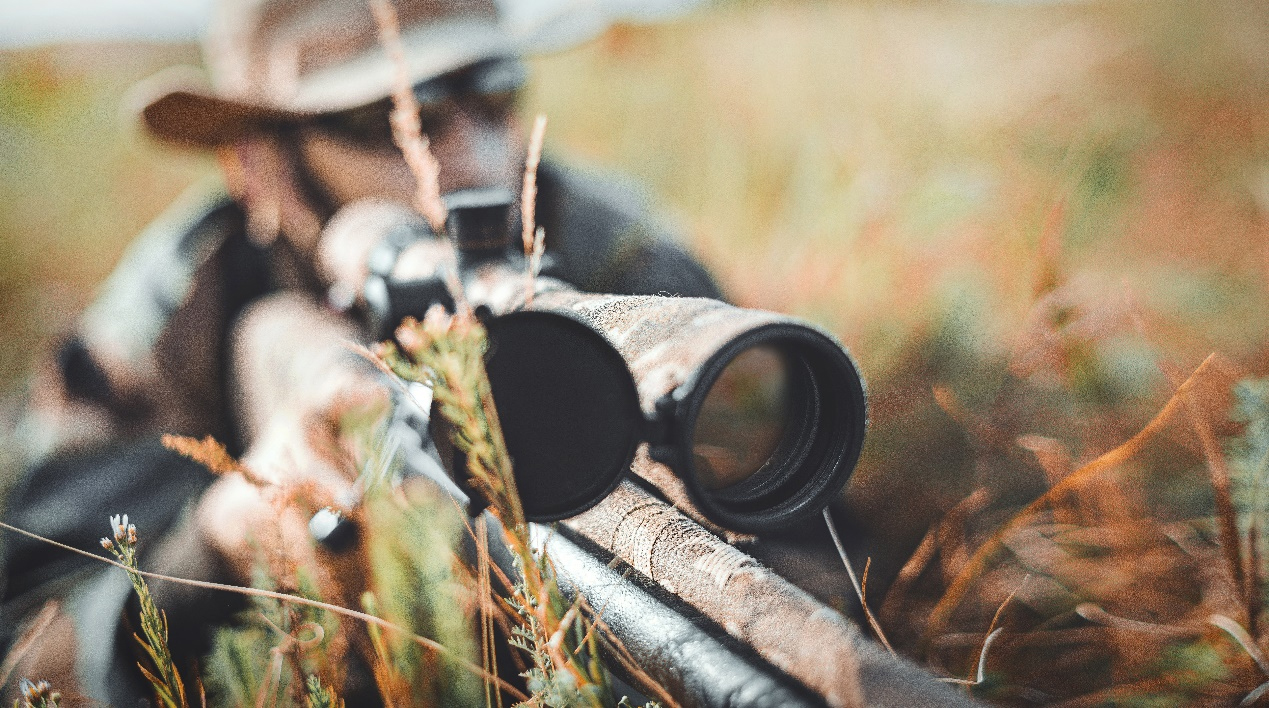A thermal rifle scope is one that displays your field of view using a heat-sensing imaging core rather than visible or infrared light and is used for nighttime hunting. Thermal optics uses the differences in heat of the objects viewed to create a video image of the area and can see in complete darkness. A thermal riflescope is essentially a thermal camera equipped with a reticle as an aiming device. To record the hunt, many more recent thermal scopes come equipped with video recording capabilities.
Thermal Camera Core Resolution: The thermal camera core is the beating heart of any thermal optic. The most costly and crucial component of the optic is this. Your optic will perform better the better the thermal core. The best cores in high-end optics now offer a resolution of 640 by 480 pixels, whereas the cheapest but still very good optics offer a resolution of 320 by 240 pixels or something similar. In general, the quality of the image improves with increasing resolution.
Pixel Pitch: The thermal sensor's pixel pitch indicates the distance between the digital image's pixels. A micrometer, also known as a micron, is the unit of measurement. Nowadays, the majority of thermal optics are between 12 and 17 microns, with the lowest number representing the highest quality. Cores for thermal optics are made by BAE Systems, ULIS, FLIR, and other companies. At the time of writing, the best cores for hunting thermal optics use a 12-micron detector, which provides a good, clear image quality.
Refresh Rates: Thermal scopes constantly refresh the image on the display screen, just like televisions and monitors do. While standing still, it can be difficult to tell the difference between 30 and 60 Hz refresh rates; however, a scope that refreshes the image 50 to 60 times per second has a benefit. For instance, using a thermal scanner for scouting in a moving vehicle will improve your image with a faster refresh rate. It might also come in handy when looking for game by sweeping the area from side to side. The differences will usually go unnoticed most of the time. Due to the likely "lag" and choppy image quality, you should avoid any refresh rate lower than 30 Hz.
Objective Lens Size: A lot of daytime hunters, especially those who hunt in low light, use scopes with objective lenses between 50 and 56 millimeters in size to get more light and have a wider field of view. Because thermal scopes do not collect light but rather rely on heat or thermal sensors, the larger objective lens may improve image quality, but it is not as important as it would be on a conventional daytime scope. The most crucial aspect is the lens's quality. In point of fact, the objective (front) lens of a thermal scope is made of Germanium, not glass. Germanium is an essential component of optical instruments like thermal optics and fiber optics due to its high index of refraction, low optical dispersion, and good heat transfer. For optimal performance in thermal scopes, the Germanium lens's quality and coating are most critical.
Ocular Lens: The lens that is closest to the eye is known as the ocular lens or eyepiece. Although the quality of the eyepiece varies between scopes, it is crucial to clarity. Comparing similar scopes by actually looking through them or consulting an expert in the field you can rely on to point you in the right direction is about the only way to determine the quality of the eyepiece.
Re-calibrating (NUCing) the Scope: Thermal scopes are always "burning" new images onto the core of the thermal imaging system. To give you an extreme example, if you're out hunting and leave your thermal scope pointed in the same direction for more than a few minutes, it might display a "ghosted" image of the objects you were looking at before. The thermal core temporarily "burns" the image of those objects. The solution to this issue is a re-calibration, also known as "NUC'ing."If the unit is not recalibrated or NUCed, artifacts are constantly burned into the thermal core, making the image darker and grainier until it becomes unusable after a longer period of time. This refresh is carried out by some thermals automatically, while others necessitate manual calibration. Despite the fact that it is simply re-calibrating, this automatic NUCing may give you the impression that your display has frozen for a brief moment and that you may hear a soft "clicking" sound. Before it automatically NUCs, many automatic recalibrating scopes will give you a warning.




